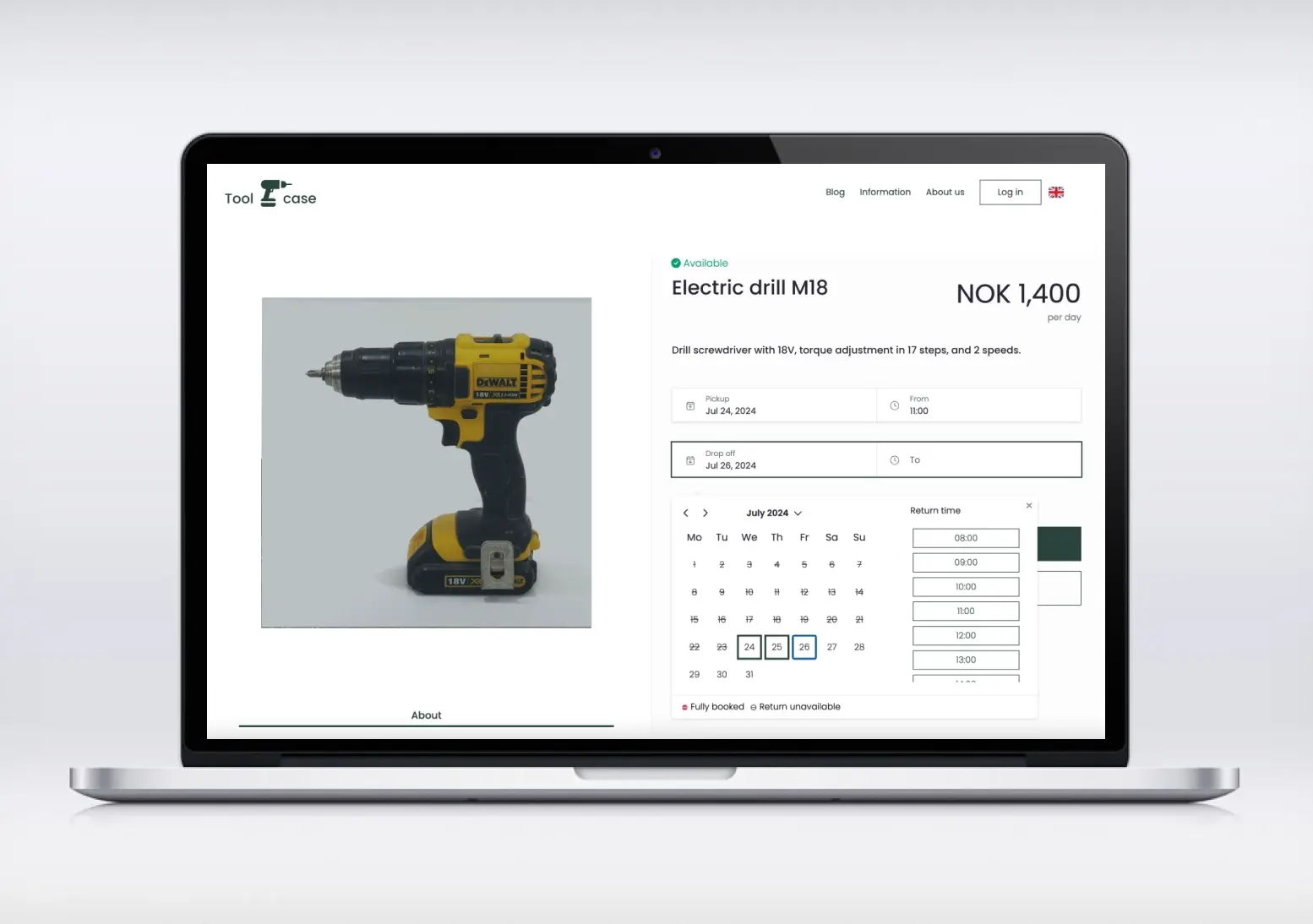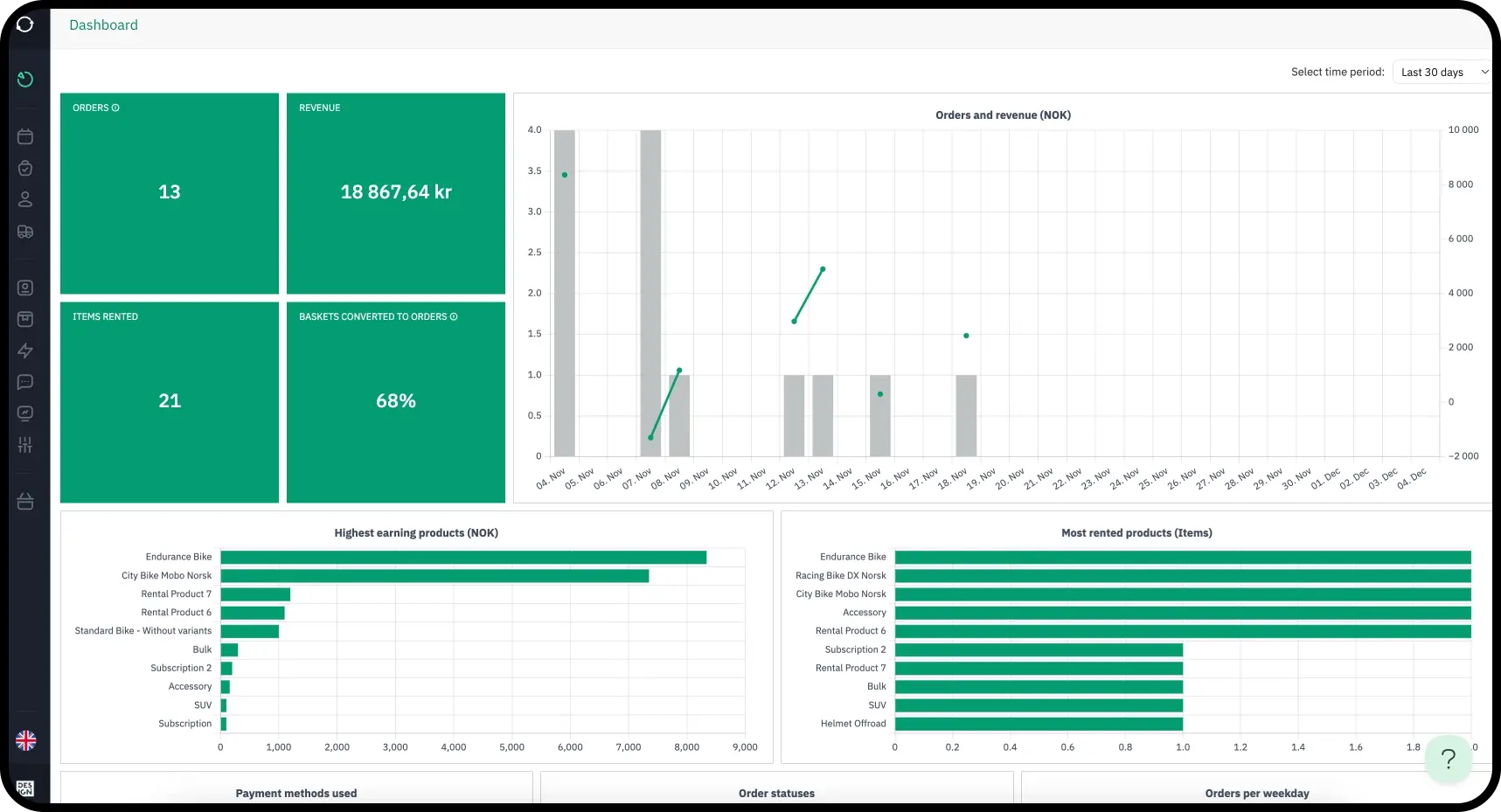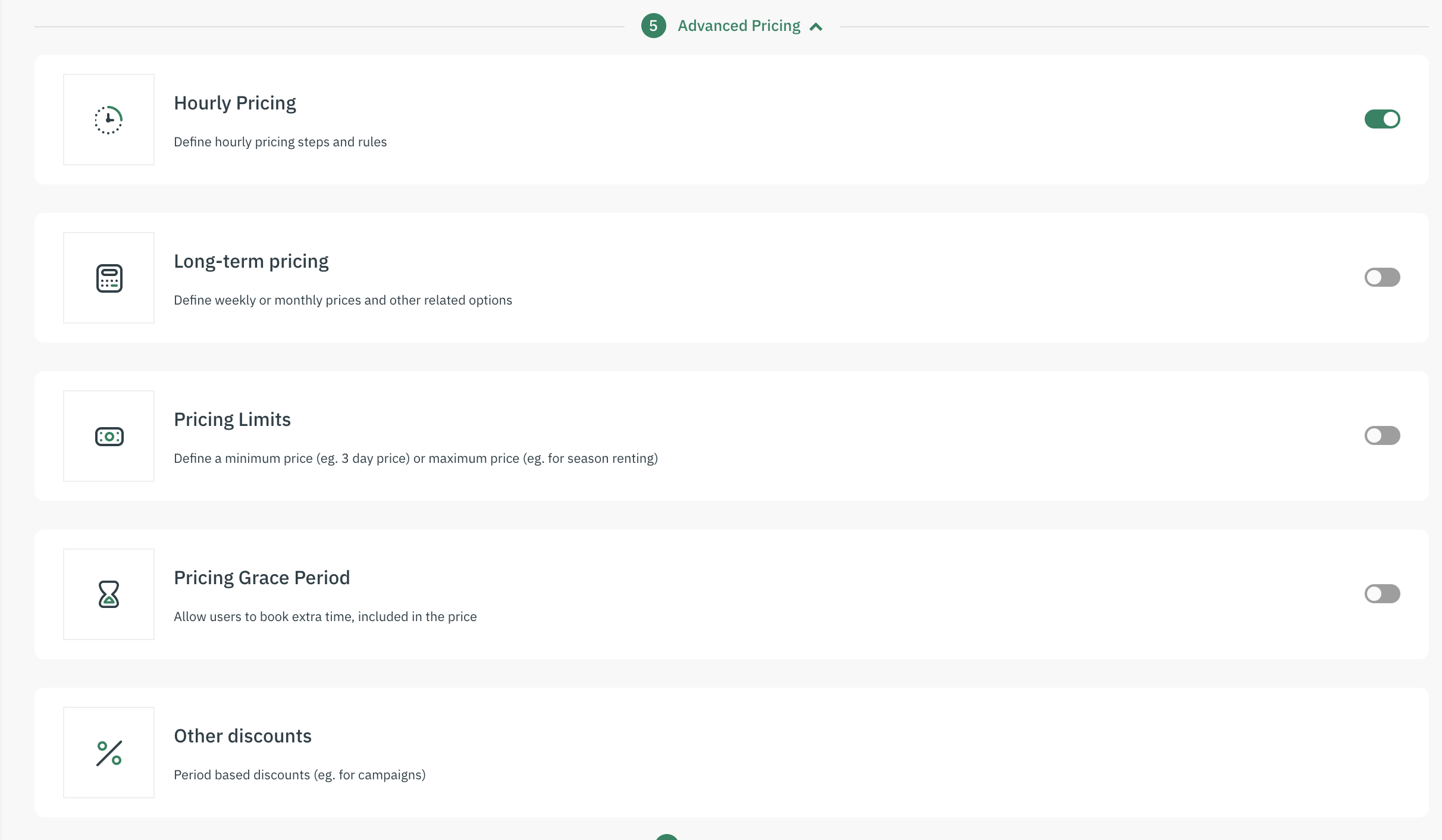The shift toward digital-first operations in rental businesses
Across equipment, vehicle, and event rental categories, the industry is witnessing a marked pivot from legacy systems to cloud-based digital platforms. This trend is driven by the rising need for real-time data, remote access, and integrated operational tools.
Cloud rental software enables rental managers to gain live insights into inventory movement, customer bookings, and financial performance—all from a unified dashboard. Platforms like Sharefox’s equipment rental software support these capabilities by providing scalable, industry-agnostic solutions for rental businesses of all sizes.
Some key effects of digital-first systems include:
- Reduction in manual data entry and duplication errors.
- Greater agility in responding to customer inquiries or returns.
- Transparent order tracking and status updates.
As digital tools become more critical for day-to-day management, those rental companies still relying on spreadsheets or disconnected systems are at risk of being left behind.

Integration of online booking systems across equipment rentals
Rental customers now expect the same self-service booking experience they’re used to with travel or eCommerce platforms. In response, equipment rental businesses are prioritizing seamless web booking experiences.
By embedding real-time availability, pricing calculators, and online payments into their websites, companies are streamlining how customers engage with their inventory. For instance, Sharefox’s online booking system gives companies the tools to create automated workflows for reservations, approvals, and payments.
Benefits of adopting online booking in equipment rentals:
- 24/7 availability, reducing dependency on office hours.
- Faster order conversion with integrated pricing logic.
- Enhanced customer satisfaction through frictionless UX.
The trend aligns with the broader movement toward digitization, where web-first interfaces replace phone and paper-based systems, especially in time-sensitive rental environments.
Predictive analytics and demand forecasting in the rental economy
In equipment-heavy segments like construction or industrial rentals, data-driven forecasting is becoming essential. Predictive analytics tools are enabling companies to allocate fleet efficiently, identify underutilized assets, and plan seasonal procurement better.
Rental software with analytics dashboards—such as Sharefox’s rental analytics tools—can help track usage patterns, downtime, and customer behavior trends.
Key insights unlocked by predictive systems:
- Forecasting peak rental periods to avoid stockouts.
- Identifying frequently rented items to expand inventory.
- Reducing idle time for high-value equipment.
This data-backed approach helps businesses reduce capital waste and improve ROI across assets. Analytics will continue to evolve as machine learning models refine inventory management strategies across the industry.

Self-service rental systems are reshaping customer expectations
The rise of self-service technologies is transforming how customers interact with rental providers—especially in short-term and urban rentals. From construction equipment to bicycles, customers increasingly expect to unlock and return items without human assistance.
Self-service solutions from Sharefox are being integrated with digital locks, QR codes, and location-based access features. This model reduces the cost-to-serve, extends operating hours, and caters to customer independence.
Key technologies supporting self-service rentals:
- Digital padlocks with time-based access.
- In-app location tracking for item pickups.
- Automated identity verification.
This shift reduces friction in the user journey and provides operators with precise, timestamped data for asset control.
IoT and telematics integration in equipment rentals
One of the most prominent trends in equipment rentals is the use of IoT (Internet of Things) and telematics for asset tracking and condition monitoring. These technologies are becoming standard across high-value machinery like excavators, generators, and forklifts.
Companies using platforms like Sharefox can benefit by integrating telematics into their rental workflows, enabling real-time visibility into usage, fuel consumption, and fault detection.
Practical use cases for telematics in rentals:
- Tracking equipment usage to prevent over-renting or unauthorized use.
- Real-time alerts for maintenance or damages.
- Geo-fencing to monitor where equipment is used.
As regulations around sustainability and asset utilization become stricter, telematics will play a key role in compliance and operational efficiency.
AI-based automation in rental operations
Artificial Intelligence (AI) is being applied to streamline backend processes and optimize customer interactions. Rental companies are beginning to automate tasks such as quote generation, invoicing, and booking verification using intelligent systems.
AI-powered tools within platforms like Sharefox’s booking software assist with:
- Automatic customer communication and reminders.
- Smart recommendations based on previous bookings.
- Fraud detection and anomaly monitoring.
By reducing human intervention in repetitive tasks, businesses can scale operations with leaner teams, which is especially relevant for seasonal rental businesses or those with large product catalogs.
Dynamic pricing strategies in the rental sector
Following trends in ride-sharing and hospitality, rental companies are adopting dynamic pricing models. This involves adjusting rental prices in real-time based on demand, inventory availability, and rental duration.
Rental management platforms like Sharefox support price automation rules to:
- Maximize revenue during high-demand seasons.
- Offer discounts for longer rental periods.
- Implement tiered pricing based on customer segments.
Dynamic pricing, powered by data and historical usage, is particularly effective for high-turnover items in the party and event rental industry. This approach ensures optimal inventory usage and drives revenue predictability.

End-to-end platform integrations: from CRM to logistics
Modern rental businesses are adopting an ecosystem mindset—moving away from standalone tools toward integrated platforms that connect CRM, inventory, eCommerce, and logistics.
By using Sharefox’s rental system, companies can sync customer data, order details, delivery schedules, and payment statuses. This reduces duplication and increases cross-functional visibility.
Core benefits of integrated rental platforms include:
- Centralized data for reporting and customer insights.
- Automated logistics planning and driver routing.
- Real-time order tracking and delivery confirmation.
Such integration is especially beneficial for rental businesses with both physical storefronts and online stores, ensuring consistency across customer touchpoints.
Sustainability and green rentals as a business differentiator
Environmental considerations are becoming central to equipment rental decision-making. Fleet-sharing and rentals are already more sustainable than ownership, but businesses are going further by electrifying their fleets and optimizing delivery logistics.
With Sharefox’s circular economy rental solutions, businesses can track lifecycle usage of items, manage repairs, and offer product-as-a-service models that reduce waste.
Sustainability practices in the rental industry include:
- Offering electric-powered rental equipment.
- Tracking emissions and reporting usage footprints.
- Promoting re-use over single-event ownership.
These trends not only meet regulatory pressures but also appeal to a growing base of environmentally conscious customers.
Peer-to-peer and marketplace rental models
Inspired by the success of platforms like Airbnb, peer-to-peer (P2P) rental models are gaining momentum. Equipment and tools can now be rented out directly between individuals or companies, reducing idle time and enabling micro-entrepreneurs.
With platforms like Sharefox, businesses can build multi-vendor marketplaces where various suppliers can list and manage their inventory. Online rental store systems support features like vendor management, payouts, and service-level enforcement.
Advantages of marketplace rentals:
- Expands product range without owning inventory.
- Attracts niche or hyper-local users.
- Enables diversified revenue streams.
This model empowers both small-scale owners and large enterprises to participate in the sharing economy.
Subscription-based rentals and long-term access models
Many equipment rental businesses are exploring subscription models, especially for high-frequency users in sectors like construction, event staging, or sports gear.
With Sharefox’s subscription rental software, businesses can:
- Offer monthly or yearly plans with flexible terms.
- Bundle services like delivery, setup, and maintenance.
- Improve cash flow with predictable revenue.
This model supports customer retention and reduces administrative effort associated with one-time rentals. It also aligns with broader consumer trends around access over ownership.
Mobile-first rental experiences
As rental transactions increasingly move to mobile, the ability to browse, book, and manage rentals via smartphone is becoming essential. Mobile-first interfaces improve user convenience and drive higher conversion rates.
Sharefox’s website booking system supports responsive designs and mobile checkouts, ensuring that businesses don’t miss out on users searching for last-minute rentals on the go.
Mobile-native rental solutions offer:
- One-click rebooking for returning customers.
- Push notifications for confirmations and reminders.
- Digital access credentials (e.g., QR codes for pickups).
As smartphone usage dominates, mobile optimization will be a key success factor for rental businesses targeting consumers and field workers alike.

Embedded analytics for operational improvement
Beyond predictive forecasting, embedded analytics now allow teams to monitor real-time KPIs such as rental frequency, maintenance costs, and average revenue per item.
Platforms like Sharefox include reporting tools that surface:
- Product-level profitability.
- Customer lifetime value.
- Inventory utilization and downtime.
This helps senior management make informed decisions about procurement, pricing, and marketing without relying on external BI tools. Data fluency is no longer a luxury—it’s a requirement in the competitive rental space.






